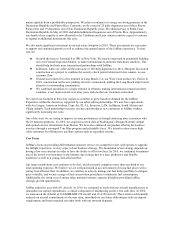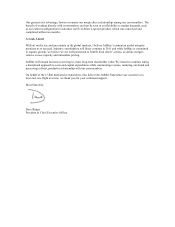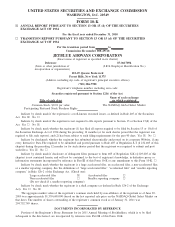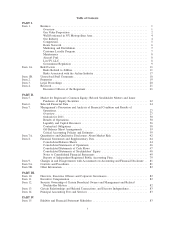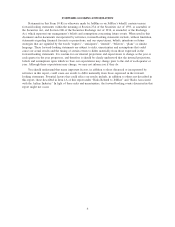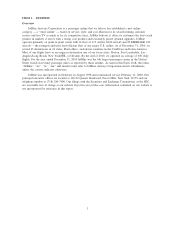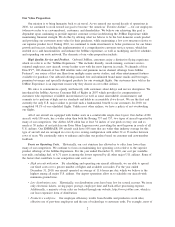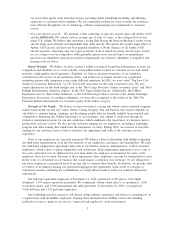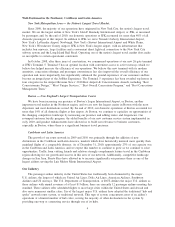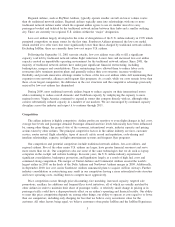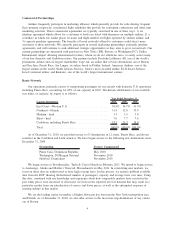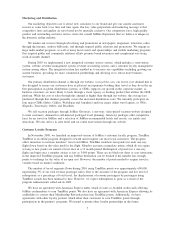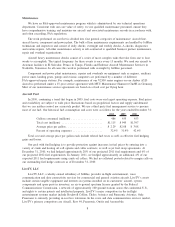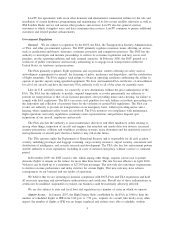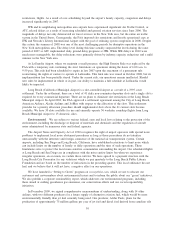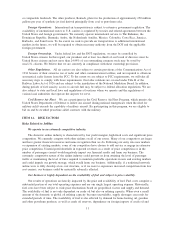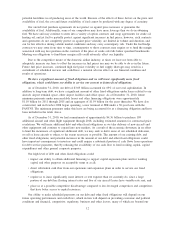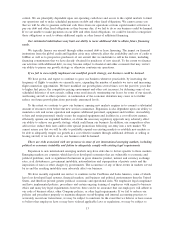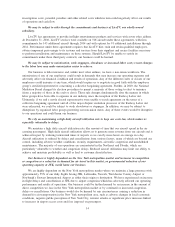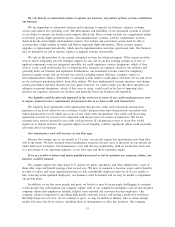JetBlue Airlines 2010 Annual Report Download - page 14
Download and view the complete annual report
Please find page 14 of the 2010 JetBlue Airlines annual report below. You can navigate through the pages in the report by either clicking on the pages listed below, or by using the keyword search tool below to find specific information within the annual report.Regional airlines, such as SkyWest Airlines, typically operate smaller aircraft on lower volume routes
than do traditional network airlines. Regional airlines typically enter into relationships with one or more
traditional network airlines under which the regional airline agrees to use its smaller aircraft to carry
passengers booked and ticketed by the traditional network airline between their hubs and a smaller outlying
city. There are currently two regional U.S. airlines within the “major” designation.
Low-cost airlines largely developed in the wake of deregulation of the U.S. airline industry in 1978 which
permitted competition on many routes for the first time. Southwest Airlines pioneered the low-cost model
which enabled it to offer fares that were significantly lower than those charged by traditional network airlines.
Excluding JetBlue, there are currently three low-cost major U.S. airlines.
Following the September 11, 2001 terrorist attacks, low-cost airlines were able to fill a significant
capacity void left by traditional network airline flight reductions. Lower fares and increased low-cost airline
capacity created an unprofitable operating environment for the traditional network airlines. Since 2001, the
majority of traditional network airlines have undergone significant financial restructuring, including
bankruptcies, mergers and consolidations. These restructurings have allowed them to reduce labor costs,
restructure debt, terminate pension plans and generally reduce their cost structure, increase workforce
flexibility and provide innovative offerings similar to those of the low-cost airlines while still maintaining their
expansive route networks, alliances and frequent flier programs. As a result, while our costs remain lower than
those of our largest competitors, the difference in the cost structures and the competitive advantage previously
enjoyed by low-cost airlines has diminished.
During 2009, most traditional network airlines began to reduce capacity on their international routes
while continuing to reduce overall domestic and Caribbean capacity by redeploying the capacity to more
regional routes. Virgin America continued to expand in routes that compete directly with us, although other
carriers substantially reduced capacity in a number of our markets. We are encouraged by continued capacity
discipline across the industry and expect it to continue through 2011.
Competition
The airline industry is highly competitive. Airline profits are sensitive to even slight changes in fuel costs,
average fare levels and passenger demand. Passenger demand and fare levels historically have been influenced
by, among other things, the general state of the economy, international events, industry capacity and pricing
actions taken by other airlines. The principal competitive factors in the airline industry are fares, customer
service, routes served, flight schedules, types of aircraft, safety record and reputation, code-sharing and
interline relationships, capacity, in-flight entertainment systems and frequent flyer programs.
Our competitors and potential competitors include traditional network airlines, low-cost airlines, and
regional airlines. Five of the other major U.S. airlines are larger, have greater financial resources and serve
more routes than we do. Our competitors also use some of the same technologies that we do such as laptop
computers in the cockpit and website bookings. In recent years, the U.S. airline industry experienced
significant consolidation, bankruptcy protection, and liquidation largely as a result of high fuel costs and
continued strong competition. The merger of United Airlines and Continental Airlines created the world’s
largest airline in 2010 on the heels of the Delta Airlines and Northwest Airlines merger in 2009. Additionally,
in September 2010, low cost carrier Southwest Airlines announced plans to acquire AirTran Airways. Further
industry consolidation or restructuring may result in our competitors having a more rationalized route structure
and lower operating costs, enabling them to compete more aggressively.
Price competition occurs through price discounting, fare matching, increased capacity, targeted sale
promotions, ancillary fee additions and frequent flyer travel initiatives, all of which are usually matched by
other airlines in order to maintain their share of passenger traffic. A relatively small change in pricing or in
passenger traffic could have a disproportionate effect on an airline’s operating and financial results. Our ability
to meet this price competition depends on, among other things, our ability to operate at costs equal to or lower
than our competitors, including only charging for fees that we believe carry an intrinsic value for the
customer. All other factors being equal, we believe customers often prefer JetBlue and the JetBlue Experience.
5


